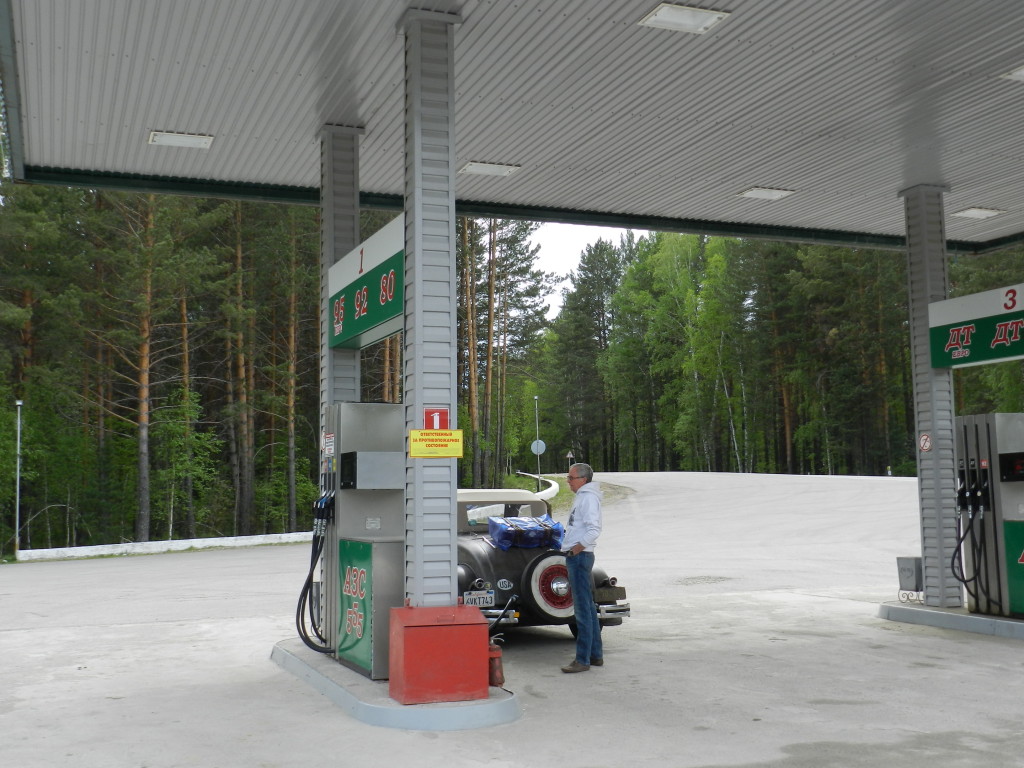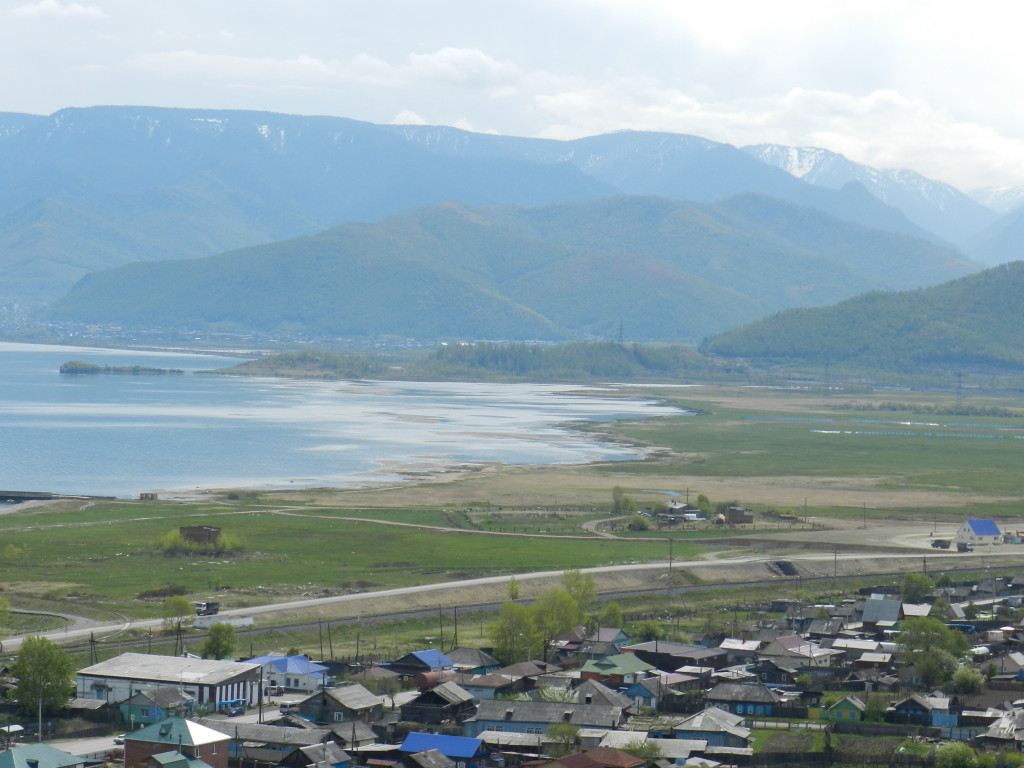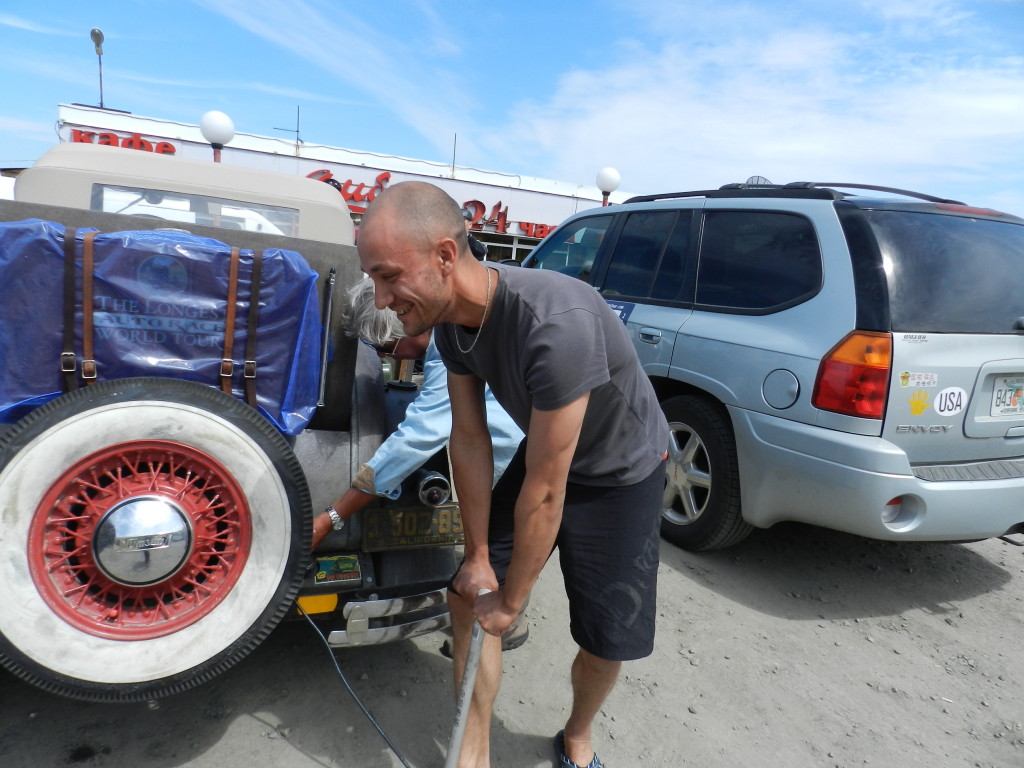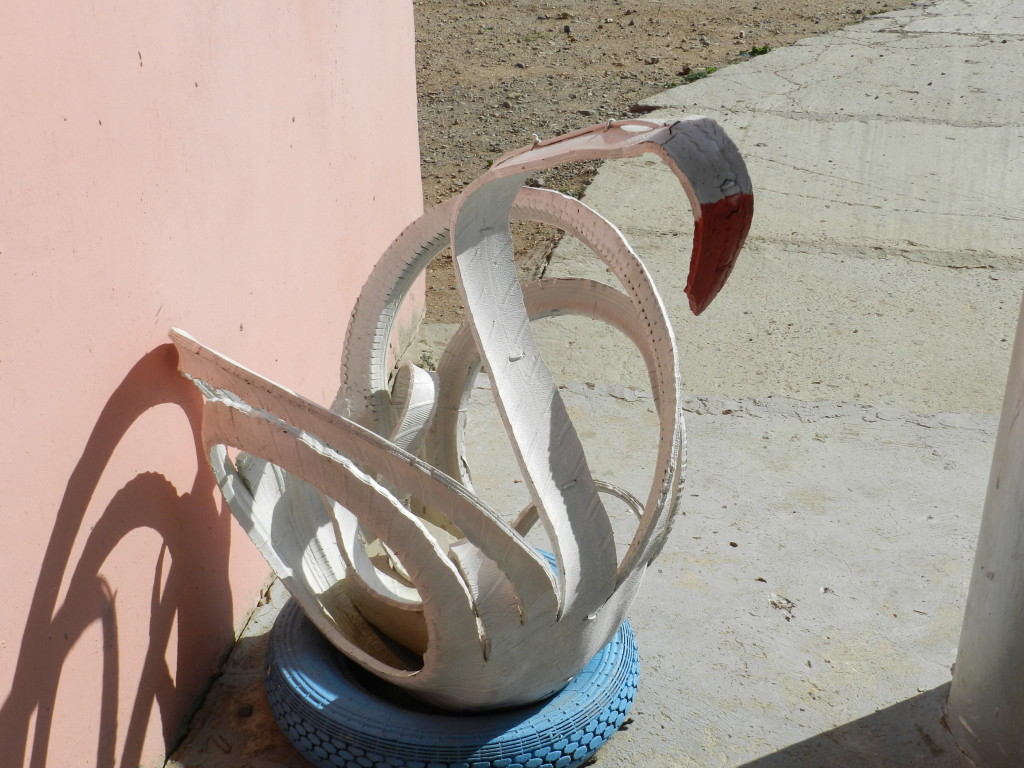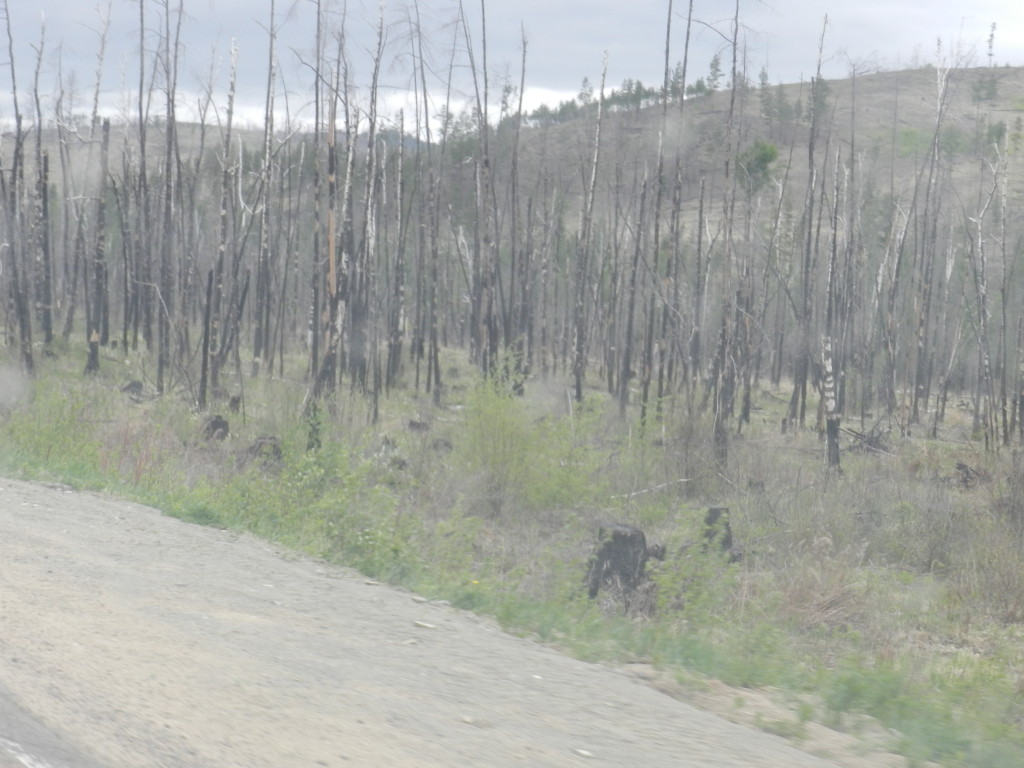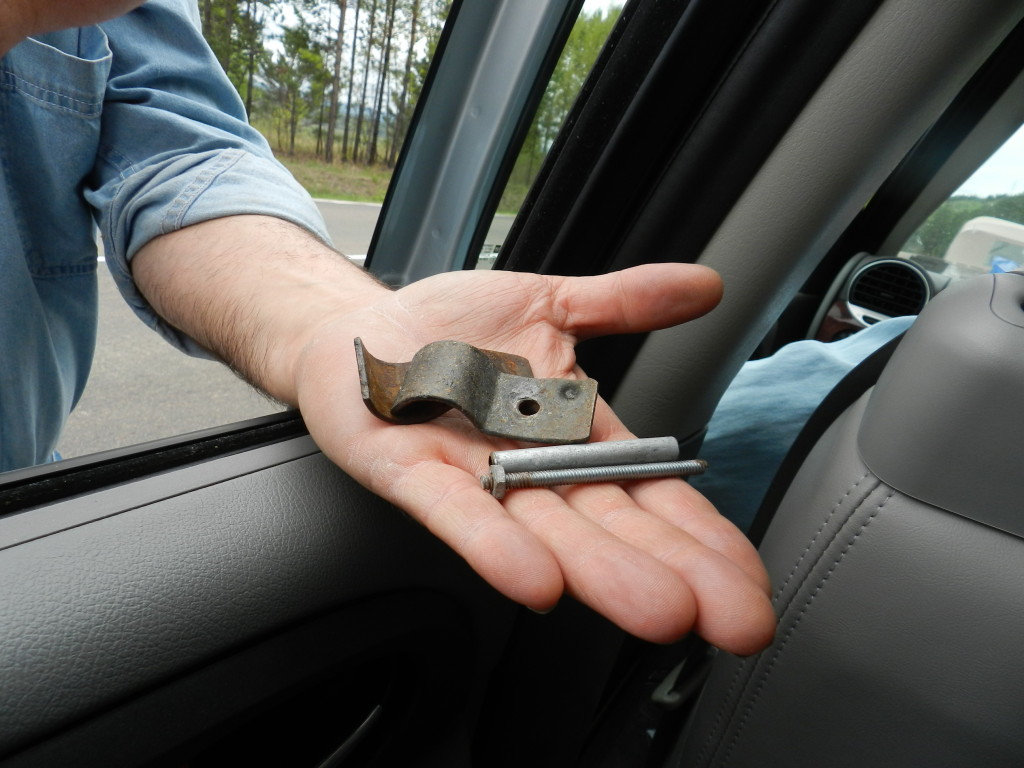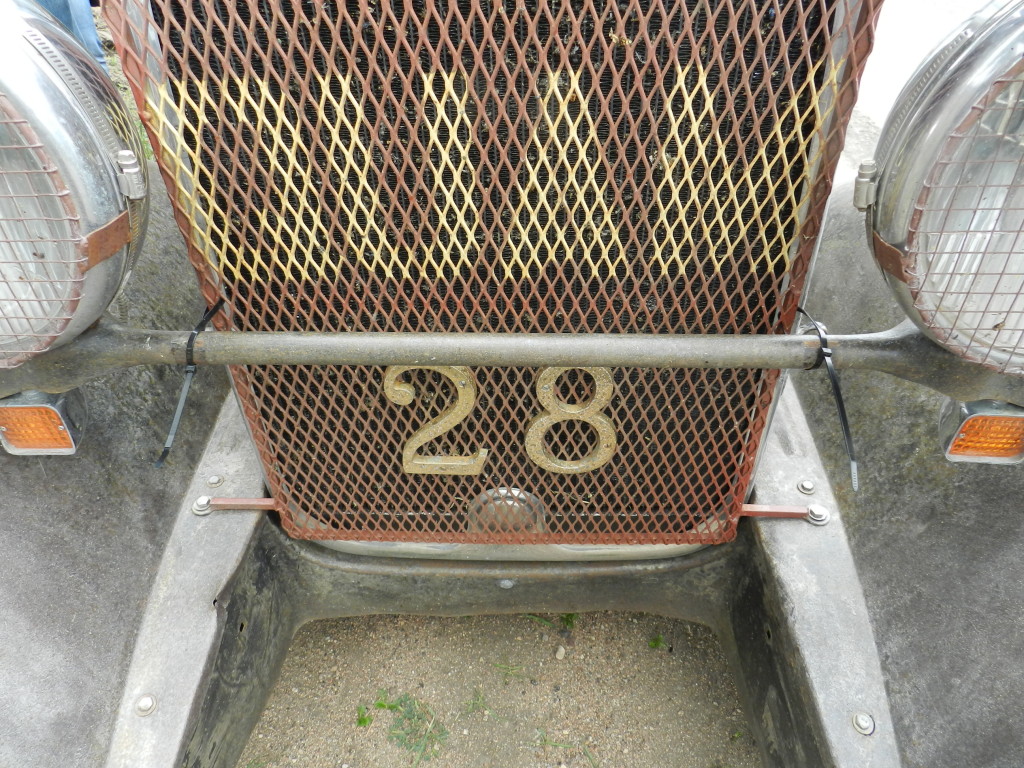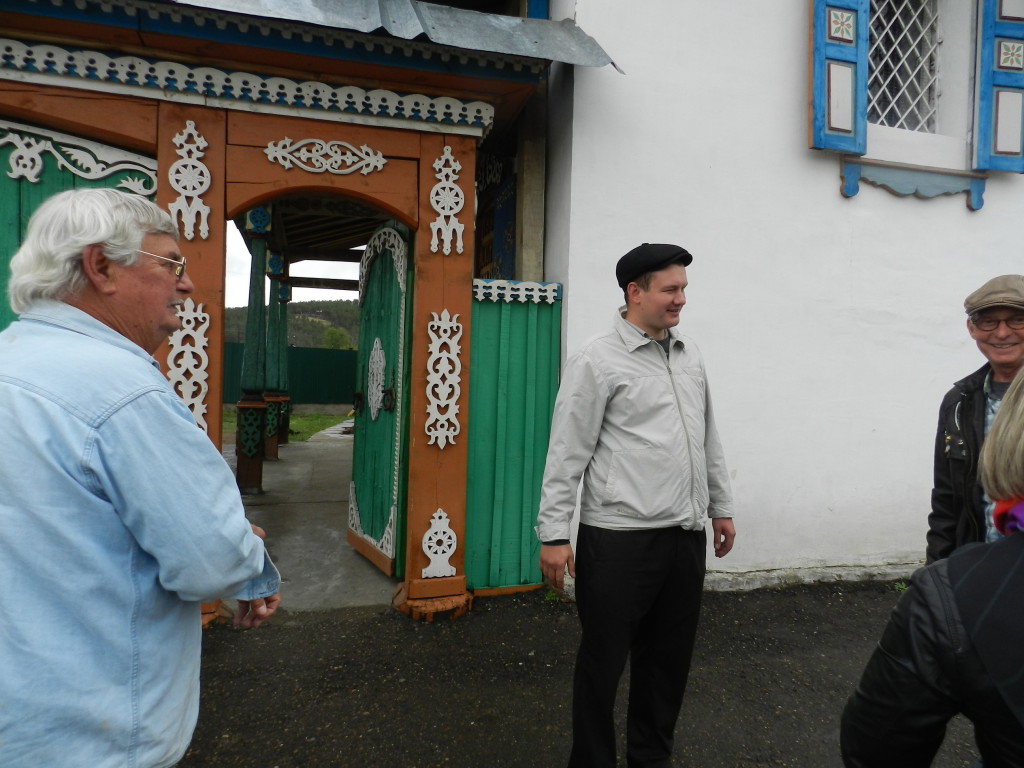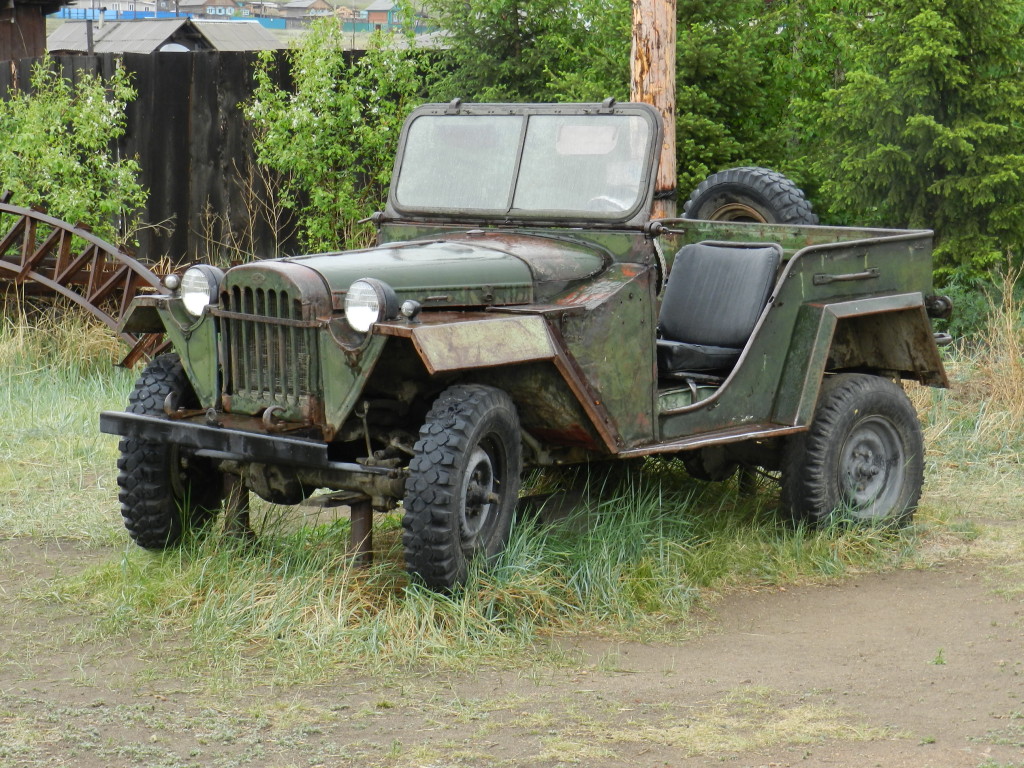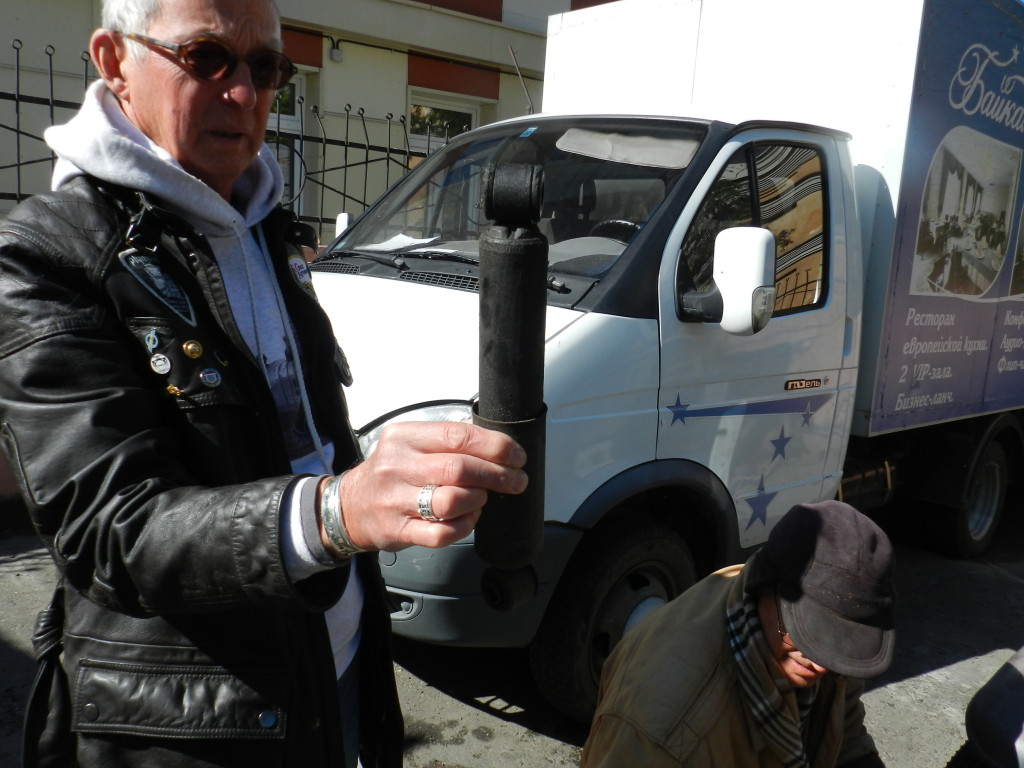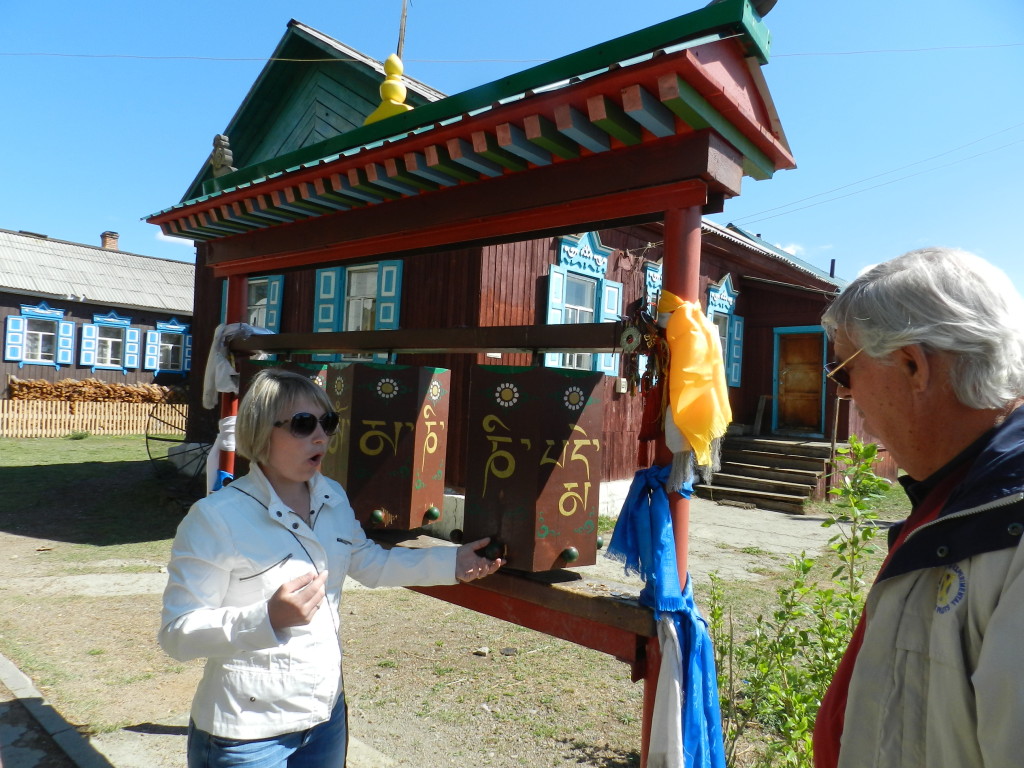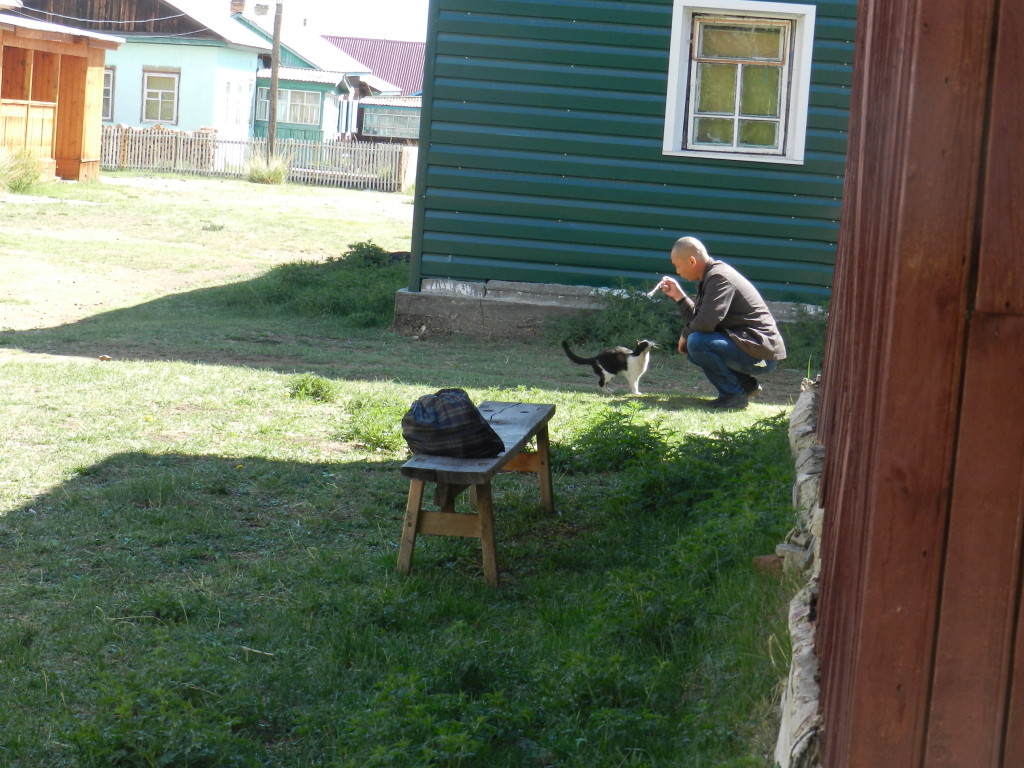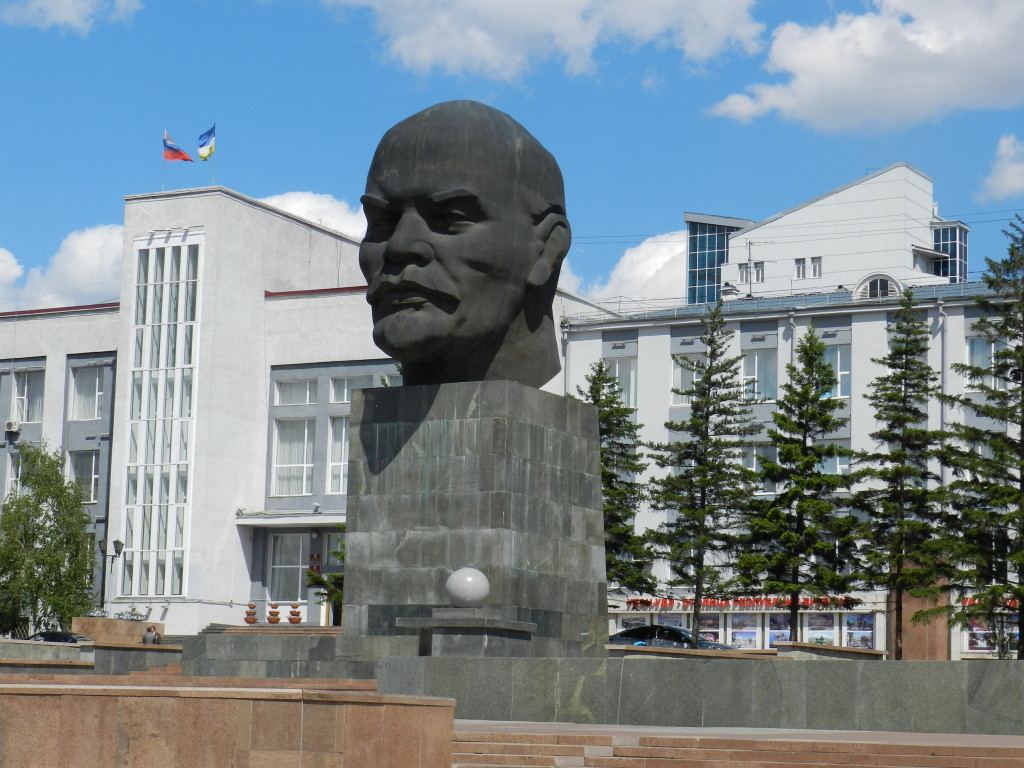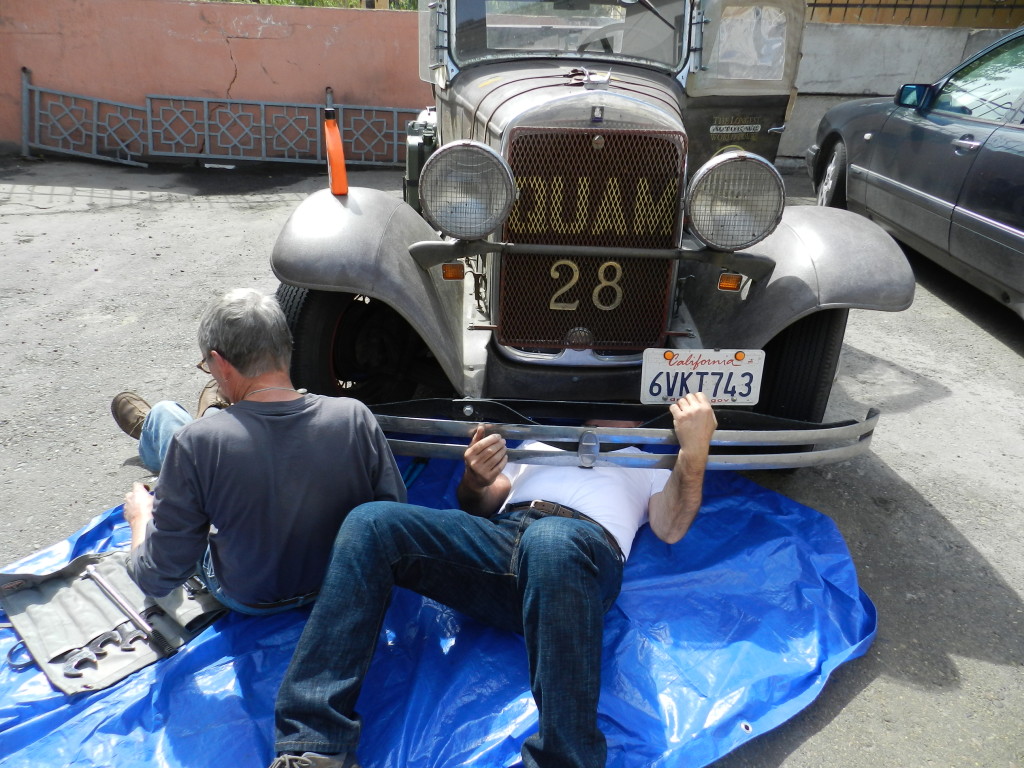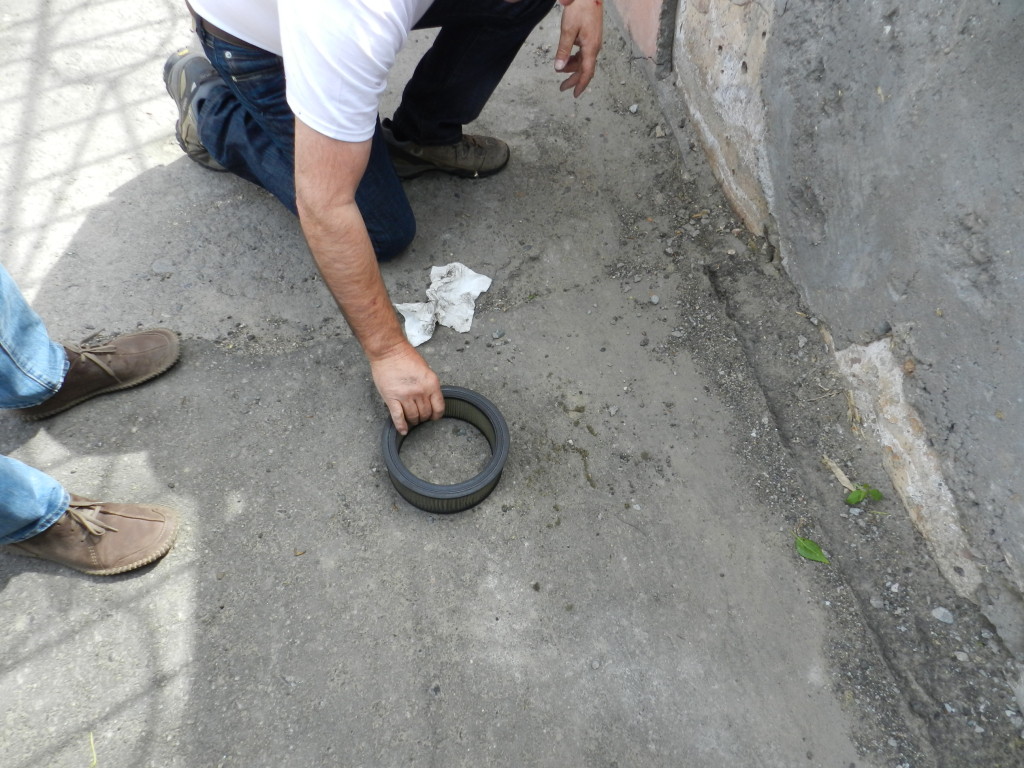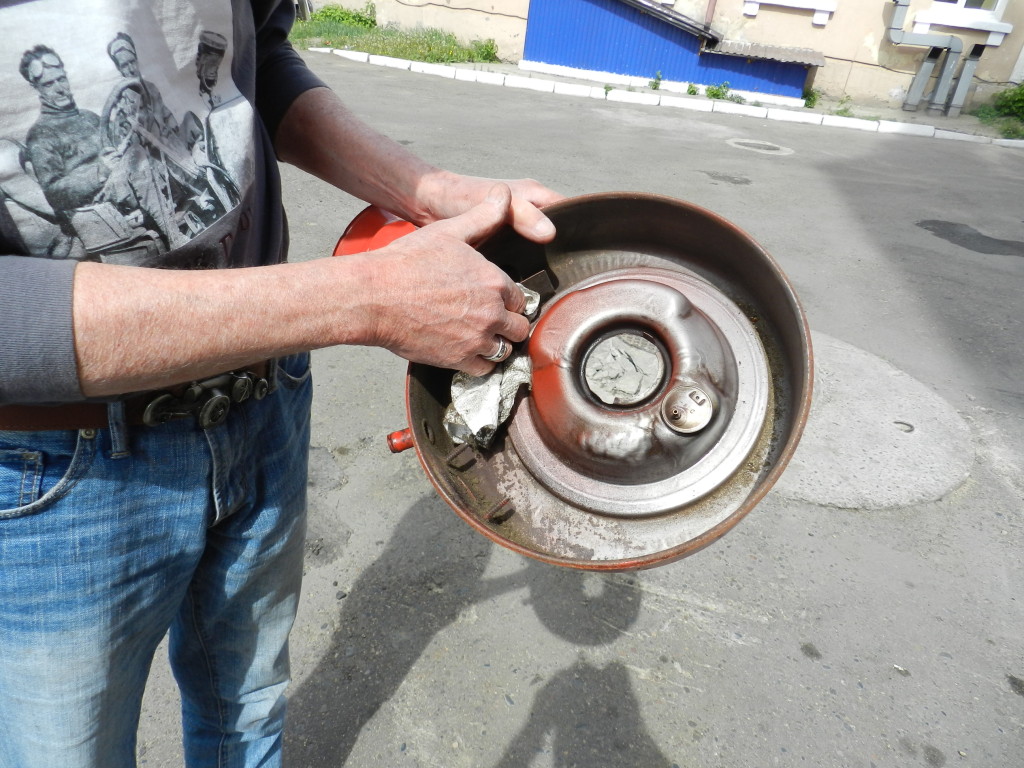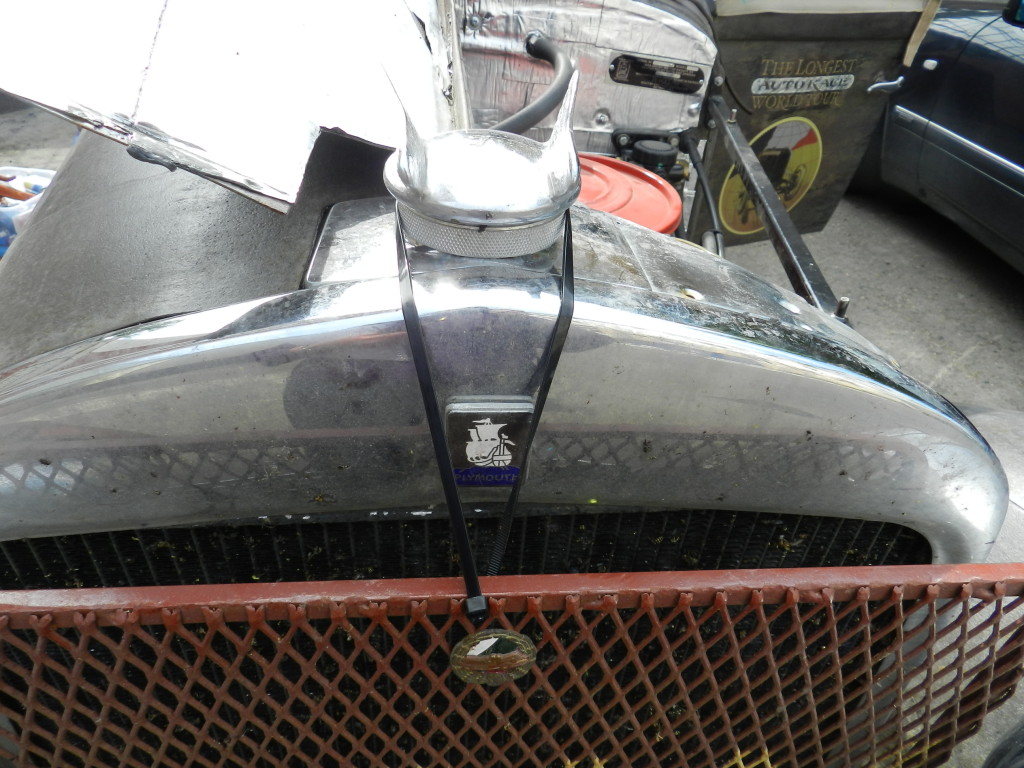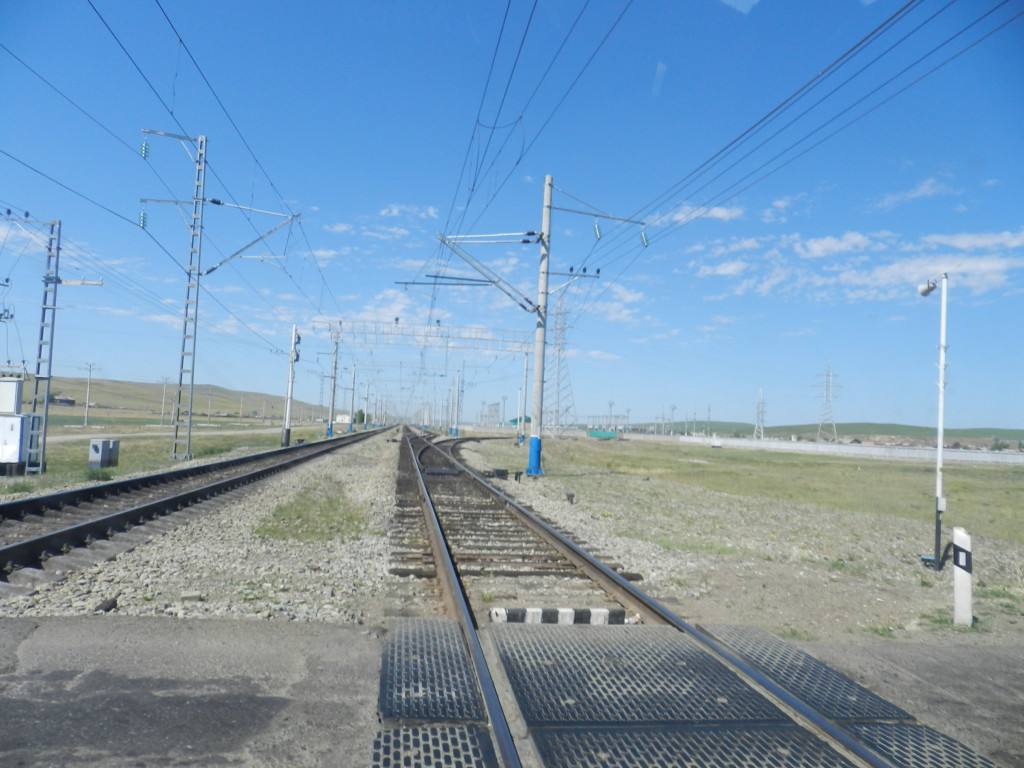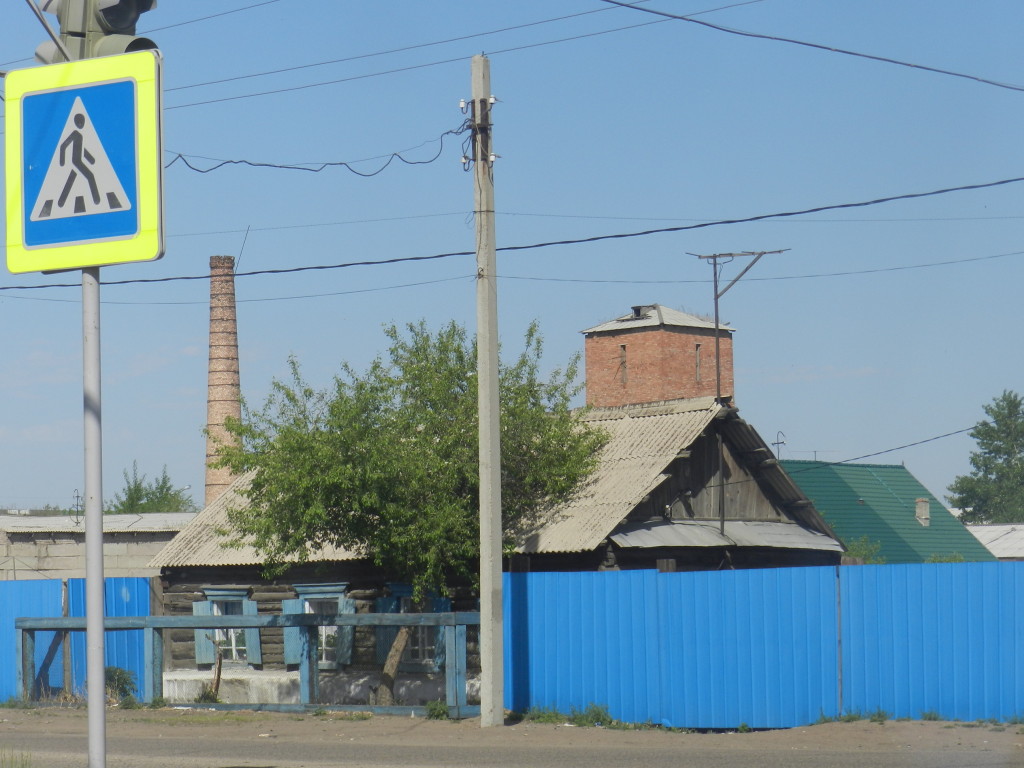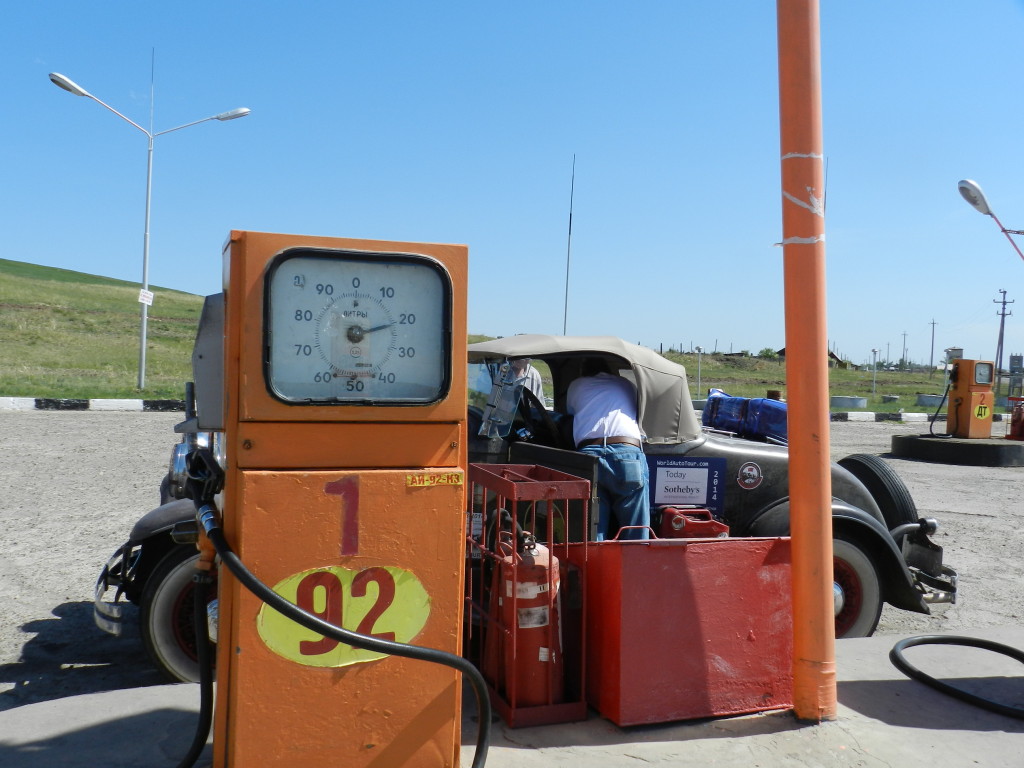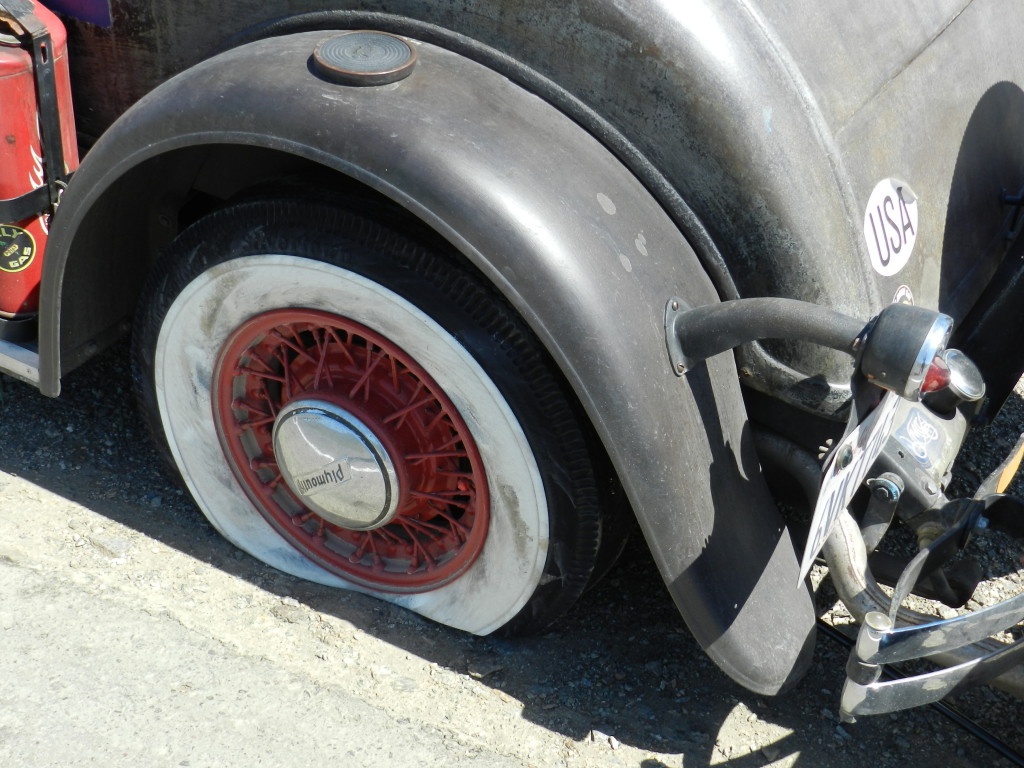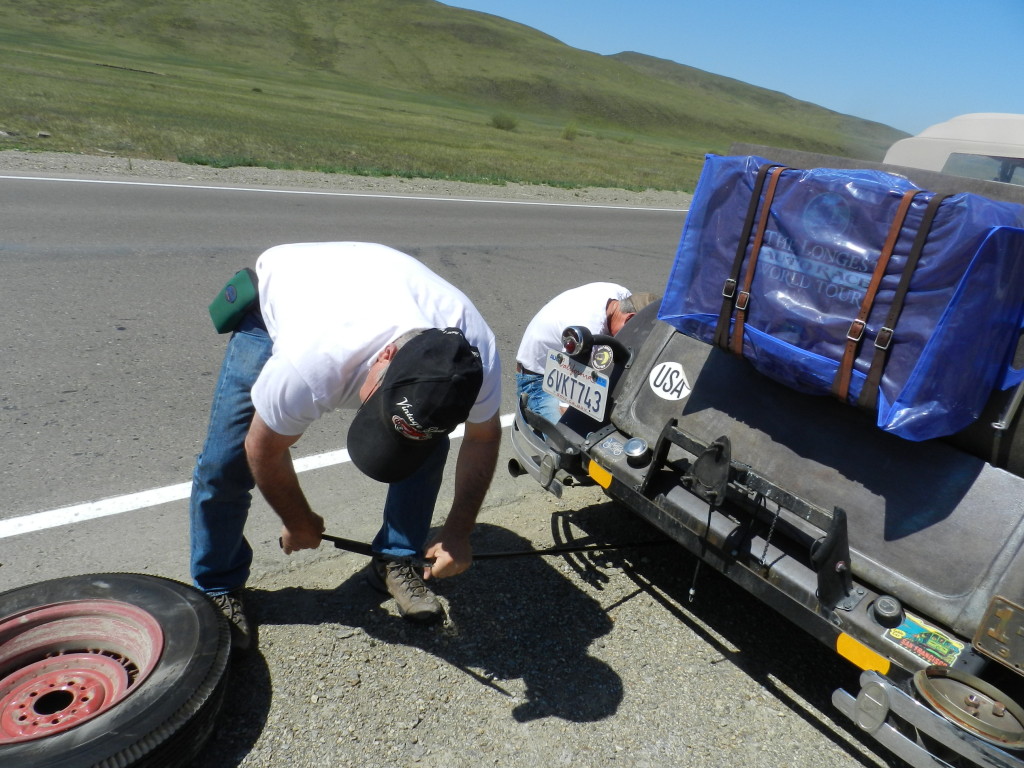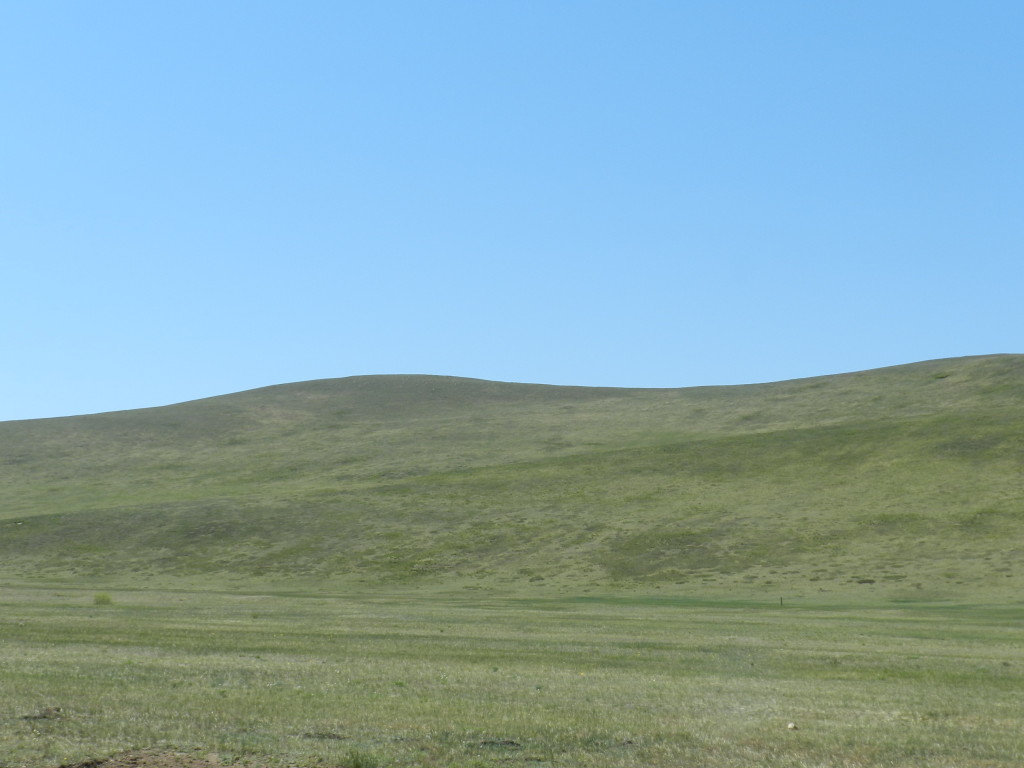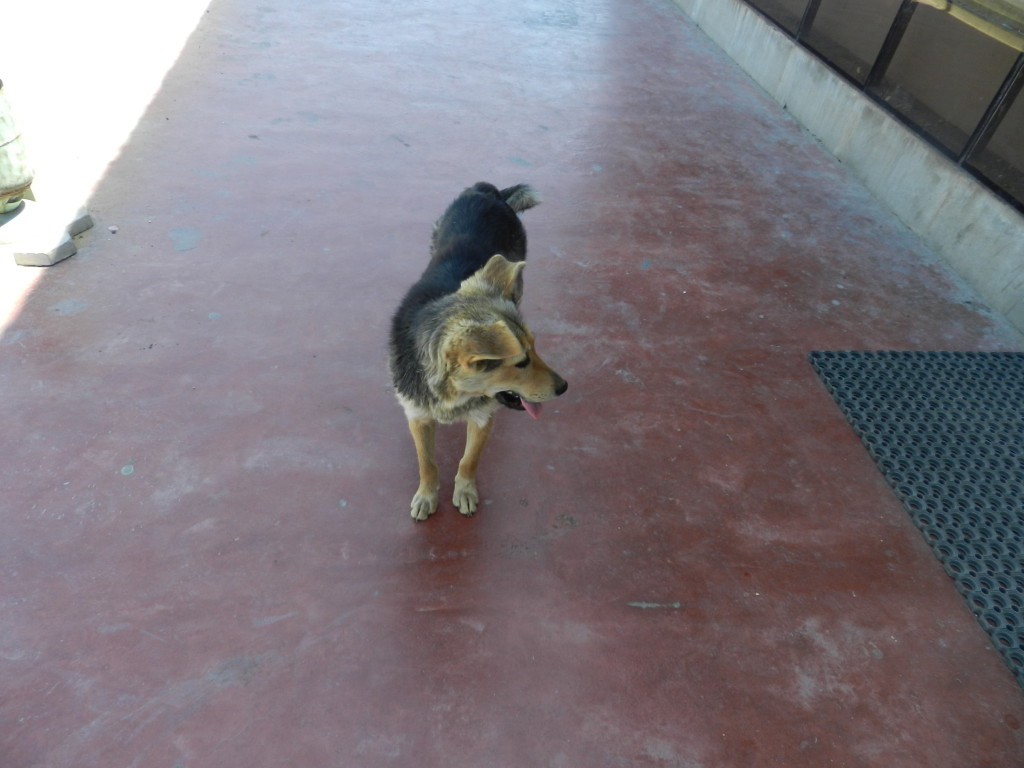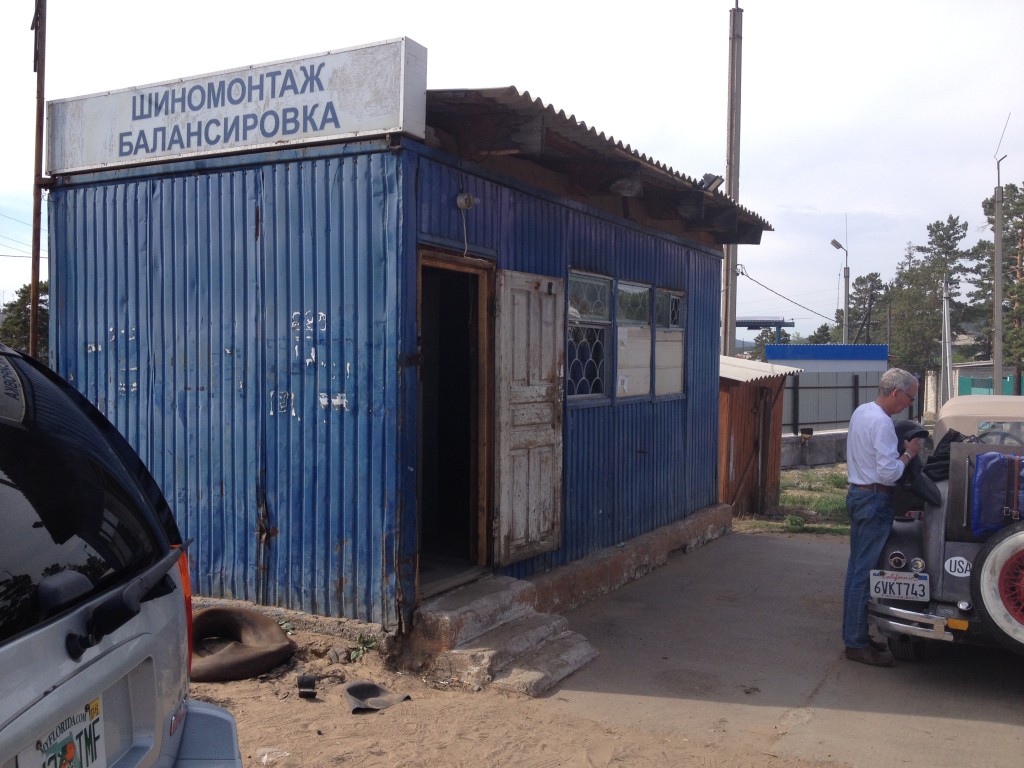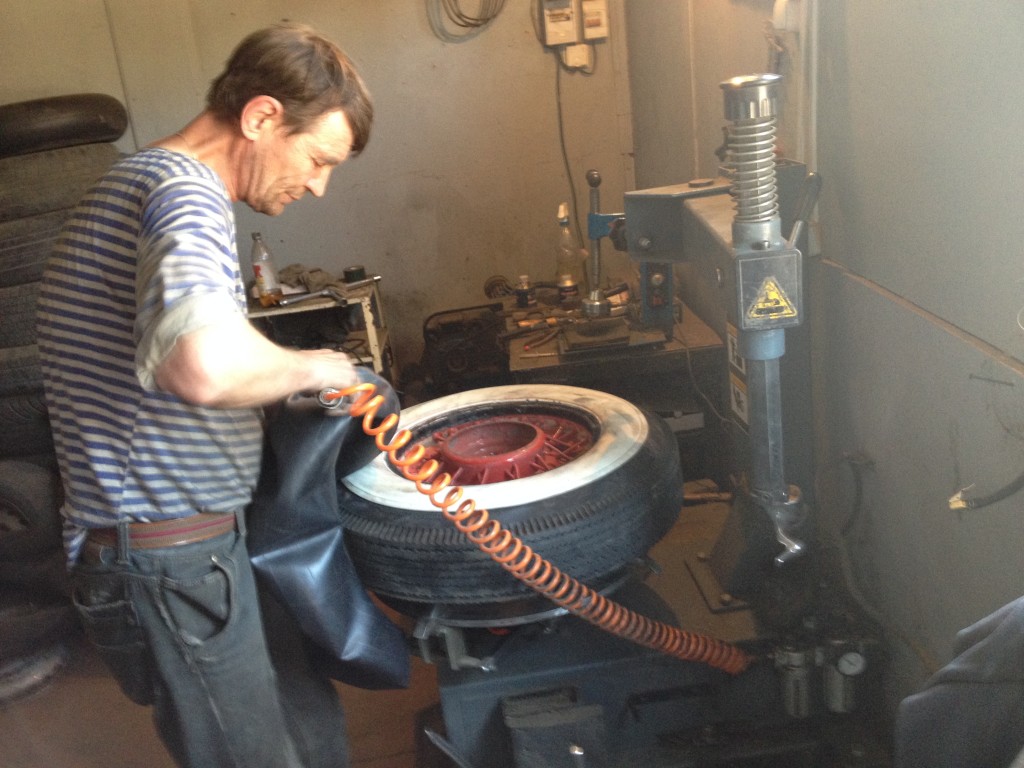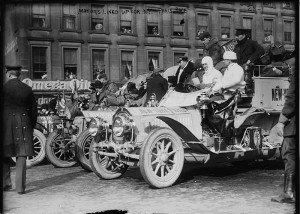We left Ulan Ude about 8 a.m., right in the middle of rush hour traffic. Today’s trip was mostly through forested areas as we followed the Selenga River (which appropriately translates to Beautiful River) and wound our way through mountainous terrain.
At 10:20 some snow-capped peaks came into view and about five minutes later, we caught our first glimpse of Lake Baikal. The photo shown below is taken from the southern tip of the lake, where we arrived at around 3 p.m. Even with a bit of haze in the air, the beauty of the area stands out.
We arrived at our hotel in Listvyanka at 6:45, after another long day of driving over bumpy roads and through construction sites; however, the roads continue to improve as we travel west!
The 1908 racers didn’t drive around Lake Baikal because they couldn’t — the terrain was too treacherous at the time — so they instead took a ferry across the lake, which ceased operations many years ago, necessitating our drive around the southern tip of the lake.
However, the original racers didn’t just drive up to the ferry and motor across the lake. According to Julie Fenster’s book, Race of the Century, when the Protos arrived in the town of Missawoia on the eastern lake shore to take the ferry to the town of Baikal on the western lake shore, Hans Koeppen and the Protos team discovered that in 1903 ferry had moved 20 miles south of Missawoia to the town of Tanchoi.
The German Protos team attempted to drive to Tanchoi, but crossing the numerous rivers flowing into Lake Baikal proved too much of a challenge, and they were soon stuck in the town of Michiha, where they tried to load the Protos onto a train for the rest of the trip to Tanchoi. But the 1908 racers ran into the same kind of problem we did trying to cross the border into China — they couldn’t find a way at the Michiha train facility to load the Protos onto the train! So they wound up driving back to Missawoia, which had the ability to put the Protos on the train for the trip to Tanchoi.
As a result of the delays to the Protos from running around the shores of Lake Baikal, the Thomas Flyer and the U.S. managed to briefly catch the German team in the railroad yard in Missawoia. However, the Protos arrived in Irkutsk on June 20 ahead of the Thomas Flyer. For more information on this part of the race, click here for the original New York Times article.
Today, the Roadster still had problems with the brake lights and the struts. The man in the photo below helping to pump up the struts is a Russian truck driver who was on his way to Moscow when he spotted us during a stop for lunch. Luke is planning to stay up late tonight to order some parts for shipment from California to Russia that we hope will fix the problems that continue to plague the Roadster!
Tomorrow we have a relaxing day for a boat ride on Lake Baikal and the day after a short 75 km drive on a good road to Irkutsk.
